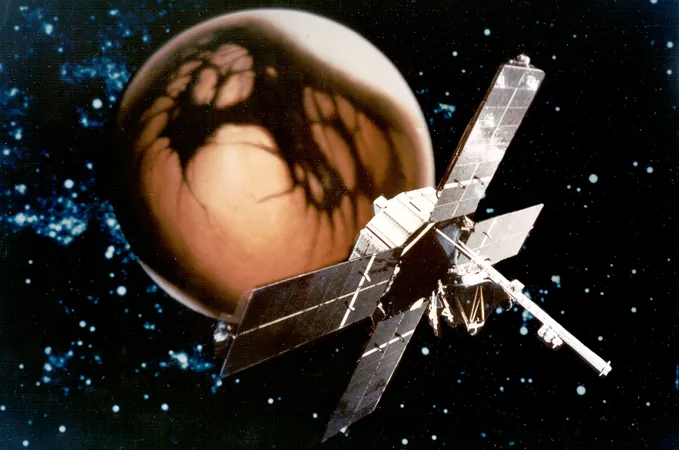
Celebrating 60 Years of Mariner 4: The Mission That Transformed Our Understanding of Mars
2025-07-14
Author: Jia
A Historic Journey Begins
Sixty years ago, on July 14, 1965, NASA’s Mariner 4 spacecraft made history by becoming the first to capture close-up images of Mars, fundamentally altering our perception of the Red Planet. In an era when many still believed in the possibility of Martian life, inspired by the imaginative theories of astronomers like Percival Lowell, the Mariner 4 flyby shattered expectations and provided concrete evidence of Mars's true, desolate nature.
From Dreams to Reality
At the turn of the 20th century, theorists like Lowell speculated that Mars was home to intelligent beings, complete with extensive canal systems designed to transport water. However, astronomical observations remained crude, and many misconceptions lingered for decades. It wasn't until the mid-20th century, when pioneering projects at Caltech and NASA began to take shape, that concrete exploration of Mars became viable.
An Ingenious Team Takes on the Unknown
Mariner 4 was designed by a team of scientists, including future JPL director Bruce Murray. Facing immense unknowns and limited experience—only one previous mission had ventured beyond the Moon—the team was determined to push the boundaries of space exploration. With Mars being nearly twice the distance of Venus, the challenges were daunting. The originality of their mission, however, lay not just in what they knew, but in the courage to explore the unknown.
A Race Against Time
Mariner 4 faced significant hurdles from its inception. Initially, a twin probe, Mariner 3, suffered a catastrophic failure shortly after launch. With a mere three weeks to regroup, engineers redesigned the probe to ensure success. After overcoming a series of navigational challenges, Mariner 4 finally embarked on its journey to Mars.
Revelations from the Red Planet
Upon reaching Mars, the spacecraft activated its scientific instruments, including a revolutionary television camera. This innovation allowed the team to capture images that not only fascinated scientists but also captivated the public. The first images, received on July 15, were fuzzy and indistinct but served to blow apart the prevailing romantic notions of a thriving Martian civilization.
Mars: A Frigid Desert
Data revealed that Mars was not the lush world many had hoped for. Instead, it was a barren desert, riddled with craters and devoid of any signs of life. This stark reality marked a turning point in planetary science, forcing dreamers to relinquish their visions of a Martian empire.
A Connection to Humanity
Yet, for the scientists at JPL, the mission was nothing short of victorious. The inclusion of a camera bridged the gap between cold data and a human connection, making Mars accessible to everyday people across the globe. A touching letter from a milkman, expressing gratitude for the team's work, poignantly illustrated the impact of their mission.
Ending a Remarkable Mission
As Mariner 4 continued to relay data for two years post-flyby, it also became a symbol of human curiosity and resilience. Although the spacecraft ultimately succumbed to micrometeoroid impacts and ran out of fuel by the end of 1967, its legacy endures. The groundbreaking findings dramatically reshaped our understanding of Mars, setting the stage for future exploration and igniting the imaginations of generations to come.




 Brasil (PT)
Brasil (PT)
 Canada (EN)
Canada (EN)
 Chile (ES)
Chile (ES)
 Česko (CS)
Česko (CS)
 대한민국 (KO)
대한민국 (KO)
 España (ES)
España (ES)
 France (FR)
France (FR)
 Hong Kong (EN)
Hong Kong (EN)
 Italia (IT)
Italia (IT)
 日本 (JA)
日本 (JA)
 Magyarország (HU)
Magyarország (HU)
 Norge (NO)
Norge (NO)
 Polska (PL)
Polska (PL)
 Schweiz (DE)
Schweiz (DE)
 Singapore (EN)
Singapore (EN)
 Sverige (SV)
Sverige (SV)
 Suomi (FI)
Suomi (FI)
 Türkiye (TR)
Türkiye (TR)
 الإمارات العربية المتحدة (AR)
الإمارات العربية المتحدة (AR)